K Aristovich
Model-based geometrical optimisation and in vivo validation of a spatially selective multielectrode cuff array for vagus nerve neuromodulation
Aristovich, K; Donega, M; Fjordbakk, C; Tarotin, I; Chapman, CAR; Viscasillas, J; Stathopoulou, TR; Crawford, A; Chew, D; Perkins, J; Holder, D
Authors
M Donega
C Fjordbakk
I Tarotin
CAR Chapman
J Viscasillas
TR Stathopoulou
A Crawford
D Chew
J Perkins
D Holder
Abstract
Background: Neuromodulation by electrical stimulation of the human cervical vagus nerve may be limited by adverse side effects due to stimulation of off-target organs. It may be possible to overcome this by spatially selective stimulation of peripheral nerves. Preliminary studies have shown this is possible using a cylindrical multielectrode human-sized nerve cuff in vagus nerve selective neuromodulation. New method: The model-based optimisation method for multi-electrode geometric design is presented. The method was applied for vagus nerve cuff array and suggested two rings of 14 electrodes, 3 mm apart, with 0.4 mm electrode width and separation and length 0.5-3 mm, with stimulation through a pair in the same radial position on the two rings. The electrodes were fabricated using PDMS-embedded stainless steel foil and PEDOT: pTS coating. Results: In the cervical vagus nerve in anaesthetised sheep, it was possible to selectively reduce the respiratory breath rate (RBR) by 85 ? 5% without affecting heart rate, or selectively reduce heart rate (HR) by 20 ? 7% without affecting respiratory rate. The cardiac-and pulmonary-specific sites on the nerve cross-sectional perimeter were localised with a radial separation of 105 ? 5 degrees (P < 0.01, N = 24 in 12 sheep). Conclusions: Results suggest organotopic or function-specific organisation of neural fibres in the cervical vagus nerve. The optimised electrode array demonstrated selective electrical neuromodulation without adverse side effects. It may be possible to translate this to improved treatment by electrical autonomic neuromodulation for currently intractable conditions.
Citation
Aristovich, K., Donega, M., Fjordbakk, C., Tarotin, I., Chapman, C., Viscasillas, J., Stathopoulou, T., Crawford, A., Chew, D., Perkins, J., & Holder, D. (2021). Model-based geometrical optimisation and in vivo validation of a spatially selective multielectrode cuff array for vagus nerve neuromodulation. Journal of Neuroscience Methods, 352, https://doi.org/10.1016/j.jneumeth.2021.109079
| Journal Article Type | Article |
|---|---|
| Acceptance Date | Jan 15, 2021 |
| Publication Date | 2021 |
| Deposit Date | Dec 15, 2021 |
| Journal | Journal of Neuroscience Methods |
| Print ISSN | 0165-0270 |
| Publisher | Elsevier |
| Peer Reviewed | Peer Reviewed |
| Volume | 352 |
| DOI | https://doi.org/10.1016/j.jneumeth.2021.109079 |
| Keywords | Neuromodulation; Selective stimulation; Multi-electrode array; Vagus nerve |
| Public URL | https://rvc-repository.worktribe.com/output/1553226 |
| Related Public URLs | https://discovery.ucl.ac.uk/id/eprint/10122667/ |
You might also like
Multimodal pain management in a dog with oral fibrosarcoma
(2023)
Journal Article
Organotopic organization of the porcine mid-cervical vagus nerve
(2023)
Journal Article
Downloadable Citations
About RVC Repository
Administrator e-mail: publicationsrepos@rvc.ac.uk
This application uses the following open-source libraries:
SheetJS Community Edition
Apache License Version 2.0 (http://www.apache.org/licenses/)
PDF.js
Apache License Version 2.0 (http://www.apache.org/licenses/)
Font Awesome
SIL OFL 1.1 (http://scripts.sil.org/OFL)
MIT License (http://opensource.org/licenses/mit-license.html)
CC BY 3.0 ( http://creativecommons.org/licenses/by/3.0/)
Powered by Worktribe © 2025
Advanced Search
